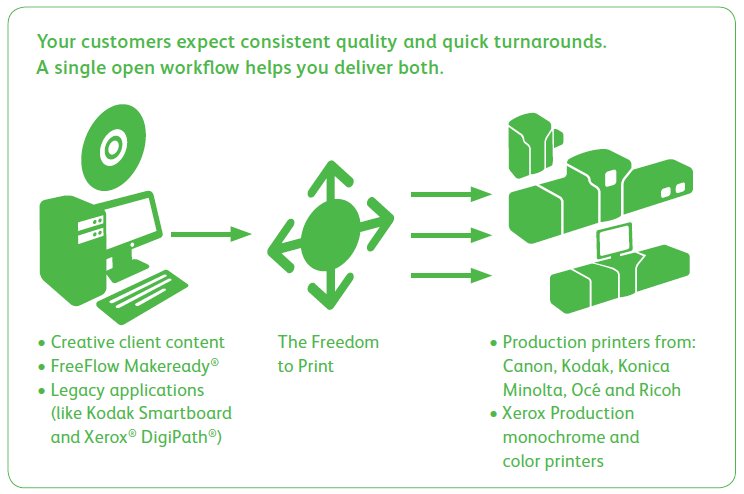One of the longest threads I have ever seen is on the LinkedIn Group “Print Production Professionals.” The discussion is headlined “Any young Production folks coming up these days? Seems all of us print people are older, and there’s nobody to teach or to care. Is basic printing (Pocket Pal) still taught? thoughts?” As I write this, there are almost 100 comments and there is no end in sight.
Ironically, this subject is an age-old subject for our industry, which is, how do we deal with the approaching shortage of skilled workers. But the problem is two-fold. First we have to acknowledge the problem and then we have to deal with it. Not everyone wants to acknowledge the problem because the printing industry is in decline.
Part of the problem is that the projections from the Bureau of Labor Statistics (BLS) says that printing jobs will decline by 8% and prepress jobs by 18%, which is misleading. According to the Canadian Printing Industries Sector Council (CPISC) nearly half of all employees are approaching retirement age, with 30 percent of all industry employees between the ages of 46 to 54 years and 19 percent older than 55 years of age. Therefore, even if the number of jobs declines, if half the existing staff retires, there will be huge opportunities or gaps in staffing.
This is compounded by a lack of on the job training. In NAPL’s Organizational Development & Compensation Study only 13% of companies spent more than 1% of their annual revenue on training. How much training do leading companies offer staff? Some experts have argued for figures as high as 5–6%, but the available statistics show that training across all industries has averaged between 2 and 2.5% of payroll for most of this decade, with leading companies spending as much as 3%.
But the greatest issue is that the graphic arts industry is simply not attracting young people. Graphic arts and printing programs in high schools and vocational schools are disappearing. During a recent assignment to evaluate the curriculum of a university, I learned that “feeder programs” or programs in vocational schools and high school printing programs are disappearing. While visiting this 4-year school, I learned that there used to be 15 local high schools and vocational schools driving students into their program – now there are only 5.
It’s not that we don’t have the training materials or teachers, there are 4 and 2 year colleges, vocational schools, and high schools. There are also organizations such as GAERF with programs such as PrintED/SkillsUSA. The Graphic Arts Education and Research Foundation (GAERF) is an organization whose mission is to advance knowledge and education in the field of graphic communications by supporting programs that prepare the workforce of the future. It was founded in 1983 by the National Association for Printing Leadership (NAPL), NPES The Association for Suppliers of Printing, Publishing and Converting Technologies and the Printing Industries of America/Graphic Arts Technical Foundation (PIA/GATF).
But the problem is that there are limited funds, limited interest and a decline in new educational initiatives. However there is one notable exception, which is the Xerox School to Career program. According to Bob Hivish, National Segment Manager, US Customer Operations, Public Sector, “Xerox’s School to Career was designed to provide high school students alternative education opportunities to acquire the skills and knowledge to succeed in the graphic communications industry preparing them with production, workflow, academic and hands-on training.” And as anyone who has every taught will recognize part of the success comes from encouraging them to create their own graphic arts pieces. The latest success story comes from Xerox in Philadelphia. If you have not seen the YouTube video “Philadelphia Students Train in Graphic Arts Career,” I recommend you check it out.
I think the bottom line is that we need to change the perception of the industry from a dirty, filthy industry to a modern, hi-tech industry. And I think we need to expand the training curriculums from just here’s how you operate this machine, to here’s how you measure and manage the process and here’s how you sell print, communication and marketing services. What do you think?
Howard Fenton is a Senior Technology Consultant at NAPL. Howie advises commercial printers, in-plants, and manufacturers on workflow management, operations, digital services, and customer research. He is a paid contributor to this blog.
[youtube]http://www.youtube.com/watch?v=OxcRVXQ2qFs[/youtube]
14 Comments
Comments are closed.



Great article… I agree, we need to do more to attract young talent.
Perception is a good place to start. Today’s print innovators are going beyond ink (or toner) on paper. With the help of emerging technologies, printers have redefined yesterday’s traditional print business model.
We have a great story to tell. Let’s tell it where the next generation of talent hangs out.
yeah thats true we have experience which is in abduance. Now we need people who can receive it. we need to attract new young talents in the print industry.
good luck .
iam proud to be associated with printing.
Great post! As a recent graduate from Organization Leadership and Supervision with emphasis on Graphic Communication Technology. I couldn’t agree more about your reasons for the lack of young people in print. I applaud initiatives like the Xerox “School to Career” Program, but I think funding is also very important. I personally benefitted from the OutputLinks Scholarship and Intern Programs but there needs to be more assistance of this type to get youth’s attention.
I think we also need to begin presenting print as a key component of the communication industry which also includes components like iPads, smart phones, TV and social networking. By so doing we can begin transforming print’s perception as the dirty profession to print the high tech opportunity.
Maybe this could help attract youth to industry. What do you think?
http://www.iipm.edu/iipm-old/student-life-sports.html
In order to keep our young talents full of life and vigour, we encourage and organize lots of sports activity in the college.
One of the key critical success factors I see in higher ed schools like Pitttsburg State is that the facility encourages the development of personal creativity. This turns out to be one of the most important motivating factors for these young people. They want to experiment with different styles and create their unique voice which they need to be different. I had the privilege to offer curriculum input to Jim Sours at Pitttsburg State in November and applaud their efforts to keep the best of the old and new and employ a facility that encouraged kids to express themselves. Lets face it … the future of our industry is with these kids.
The challenge is lack of sexiness. Print just isn’t as sexy to an up and coming graphic artist as online or gaming is. That’s the growth market, that’s the medium they’re growing up in and that’s where the jobs (at least the obvious, sexy ones) will be.
Everyone bemoans the loss of industry and manufacturing in the US. But try to find a college with a machinist or toolmaker’s curriculum. Even welding is disappearing as a core major; yes, you might find a specialized class or two but not a degree program.
If we want these skill sets and careers in the marketplace we have to act like we do, from the ground up, starting with the kids, and moving int the schools, then the companies.
Oh, and we need to make them sexy again.
Mark, I agree with you. The appeal of “print” is not evident to current or soon to be young professionals. I think the use of print media with newer social media “tactics” could bring some of the appeal back to this industry. We talk about “Web to Print” but how about “Print to Web?” Its easy for use to see the appeal since we’re so close to the industry but I think the challenge is building learning curriculum and starting “marketing” activity to show how interesting and alive the print industry is…its just not obvious to young talent.
I work for Xerox and my position supports the print industry but I do have an Information Technology background and I can see the benefits and appeal of print when combined with other methods. Just a few thoughts…